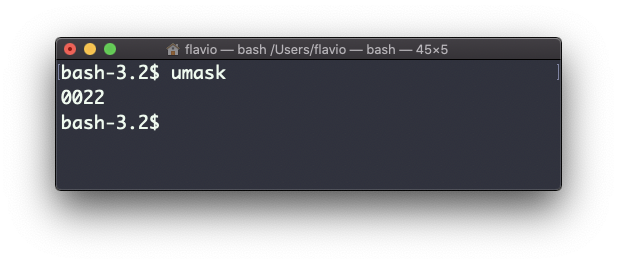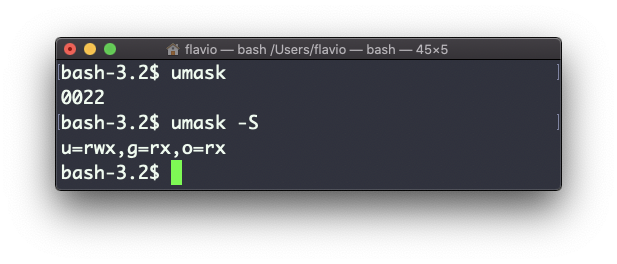Linux commands: umask
A quick guide to the `umask` command, used to set the default permissions of files
THE SOLOPRENEUR MASTERCLASS
Now open with 50% OFF launch discount!
When you create a file, you don’t have to decide permissions up front. Permissions have defaults.
Those defaults can be controlled and modified using the umask command.
Typing umask with no arguments will show you the current umask, in this case 0022:

What does 0022 mean? That’s an octal value that represent the permissions.
Another common value is 0002.
Use umask -S to see a human-readable notation:

In this case, the user (u), owner of the file, has read, write and execution permissions on files.
Other users belonging to the same group (g) have read and execution permission, same as all the other users (o).
In the numeric notation, we typically change the last 3 digits.
Here’s a list that gives a meaning to the number:
0read, write, execute1read and write2read and execute3read only4write and execute5write only6execute only7no permissions
Note that this numeric notation differs from the one we use in chmod.
We can set a new value for the mask setting the value in numeric format:
umask 002or you can change a specific role’s permission:
umask g+rThe
umaskcommand works on Linux, macOS, WSL, and anywhere you have a UNIX environment
I wrote 20 books to help you become a better developer:
- Astro Handbook
- HTML Handbook
- Next.js Pages Router Handbook
- Alpine.js Handbook
- HTMX Handbook
- TypeScript Handbook
- React Handbook
- SQL Handbook
- Git Cheat Sheet
- Laravel Handbook
- Express Handbook
- Swift Handbook
- Go Handbook
- PHP Handbook
- Python Handbook
- Linux Commands Handbook
- C Handbook
- JavaScript Handbook
- CSS Handbook
- Node.js Handbook